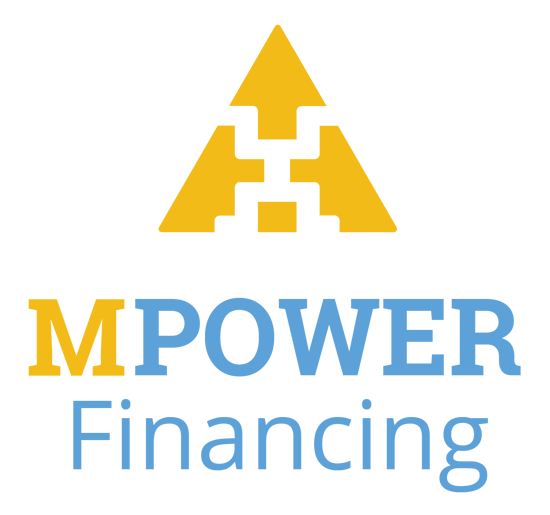Should You Pay Off Student Loans or Invest?
It depends on your situation, including the type of student loans you have and your financial goals.
Many, or all, of the products featured on this page are from our advertising partners who compensate us when you take certain actions on our website or click to take an action on their website. However, this does not influence our evaluations. Our opinions are our own. Here is a list of our partners and here's how we make money.
If you’re debating whether to pay off student loans or invest, start with a close look at your financial situation.
Ideally, you’re able to pay your necessary living expenses, such as housing and transportation, and contribute to an emergency fund. If you’re struggling to do so, prioritize those needs and emergency savings. Also be sure to make at least the minimum payments on your student loans.
If you can cover those expenses, then check whether your employer matches contributions to a 401(k) retirement plan. If so, contribute at least enough to get the match — that’s free money.
Advertisement



Student loans from our partners

on SoFi® website
SoFi® 

Fixed APR
4.24-9.99%
Min. credit score
650
on Earnest website
Earnest 
Fixed APR
3.72-9.99%
Min. credit score
665

on Credible’s website
ELFI 

Best for faster repayment options
Fixed APR
4.88-8.44%
Min. credit score
680
Your next step: Consider these questions to determine whether to pay off student loans or invest.
What’s your student loan interest rate?
The higher your interest rate, the more you pay over time. Comparing your student loan interest rate with how much you can expect to earn with an investment can help you decide whether to pay off student loans or invest first.
As a general rule of thumb, it’s reasonable to expect a 6% average annual return on a stock market portfolio. Keep in mind that some years will have a higher or lower return, depending on your type of investment, the economy and how much you have to pay in fees for your investments.
An interest rate higher than 6% on your student loan could mean you may not make extra money by investing. Instead, your money might do more for you by paying down your student loan and reducing interest charges. Aim to make extra payments toward the principal.
An interest rate lower than 6% on your student loan means you might earn more with an investment than you could save by paying more on your student debt. This isn’t a guarantee, which means choosing to invest instead of paying toward student loans comes with the risk of losing money. But you could make more over the long term if you put the extra money in a retirement or brokerage account.
Did you know...
The more time you allow your money to sit in an investment, the more compound interest can work in your favor. By investing when you’re younger, you give your money more time to grow. See how much you could gain by using a retirement calculator. Do you have federal or private student loans?
Federal loans generally have lower interest rates than private loans and come with more benefits. Programs such as Public Service Loan Forgiveness can reduce or erase your student debt, and income-driven repayment plans can make your payments more affordable for you.
If you only have federal loans and qualify for a forgiveness program, investing is likely the best move. Paying extra on your federal student loans will only reduce the total amount that might qualify for forgiveness later.
Private loans often have higher interest rates than federal loans and rarely have the same repayment or forgiveness programs. If you have private student loans, it’s probably better to prioritize repaying the loans and possibly refinancing.
Refinancing your student loans means that a private lender pays off your existing student loans and issues you a new private loan with new terms. This move can decrease your interest rates, letting you pay off student loans faster and free up money for other financial goals, like saving or investing.
» MORE: NerdWallet's editorial team's list of best student loan refinance companies
🤓 Nerdy Tip
You don’t necessarily have to choose between paying down debt and investing. If you can, aim to at least invest in a retirement fund, through a 401(k), IRA or both. Then put any extra cash toward your student loans. This way, you’re reducing debt while still building long-term savings. What’s your risk tolerance?
How comfortable you are with losing money on an investment is known as your risk tolerance. If you’re comfortable with possibly losing money, at least in the short-term, you probably have a high risk tolerance. If the thought of losing money when it could have gone toward your student loan makes you uncomfortable, you might have a low risk tolerance.
A low risk tolerance means you’ll likely prefer to pay more toward your student loans. This gives you a guaranteed return on your investment, because you can calculate exactly how much it saves you in interest. However, the return on reducing future interest might be less than you could earn with investments.
A high risk tolerance means you’ll probably be comfortable investing your money. It could have a higher return — earning you more money than what you saved in student loan interest — but it's not guaranteed. That means it’s a riskier option, and you’ll need to be comfortable with that uncertainty.
Are you changing retirement investments soon?
Planning to change your investment strategies soon could also influence your decision. It’s common for people to lower their risk tolerance as they near retirement to minimize potential losses right before they retire. But a lower risk usually means a lower return on your investments.
No plans to change your retirement investments soon means you can probably keep a higher risk tolerance over the next several years or longer. So the difference between your anticipated annual return and your student loan interest rate will likely be the same during that time, unless the market changes drastically or you refinance your loans.
Planning to change your retirement investments soon means you’ll likely see a lower annual return on your investments if you swap to a lower risk tolerance. When you make that switch, be sure to recheck if your annual return or loan interest rate is higher. If your student loan interest rate is now higher than your expected return on investments, it might be time to change tactics and start using any extra money to pay down your student loan.
🤓 Nerdy Tip
Strategies for retirement investments can be tricky. If you have a certified financial planner or advisor helping with your retirement plans, consider talking with them before making this decision. What are your personal money goals?
Your vision for the future might make the decision for you.
Paying more on your student loans is a good option if you have any of the following personal financial goals:
- Pay off your debt sooner.
- Have more certainty about how your money works for you.
Investing your money might make more sense if you find any of the following goals more important:
- Potentially earn a higher return and make the most of compound interest.
- Make your money work for a future financial goal, such as retirement.
Personal financial goals are often tied to emotions, so be honest with yourself if investing your money or lowering your student loan debt feels like it makes more sense to you.
Steps to take before deciding
Regardless of which option you choose, these moves can make the most of your money.
Consider refinancing private loans. Refinancing your private student loans can give you better loan terms, a lower interest rate and big savings over the term of your loan. Having a stable income and credit score at least in the high 600s will get you the best loan terms.
Refinancing federal student loans can be risky, because you’ll lose federal benefits and other protections. Be sure you won’t need those benefits before going this route.
Pay more toward other debt. If you have other debt outside of student loans, such as with credit cards, consider ways to use extra money to reduce your total debt.
Depending on your situation, you might prefer the debt avalanche method or debt snowball method, which prioritize individual debts in different ways.
Build an emergency fund. Surprise expenses, such as a car repair or a trip to the emergency room, can hit your wallet hard. Before sending extra money to your lender or investing it, put it into a savings account to build an emergency fund.
We recommend working toward enough money in an emergency account to pay living expenses for three months — but it’s OK to start with a few hundred dollars.
Look for ways to increase your contribution. Research ways you can maximize your money. If you decide to invest, find out if your employer matches 401k contributions to help boost your retirement plan more quickly.
If you want to pay more toward your student loans, investigate repayment or forgiveness programs for federal loans.
For private loans, calculate how much extra you need to pay each month to reach your goal of being debt-free more quickly.
Article sources
NerdWallet writers are subject matter authorities who use primary,
trustworthy sources to inform their work, including peer-reviewed
studies, government websites, academic research and interviews with
industry experts. All content is fact-checked for accuracy, timeliness
and relevance. You can learn more about NerdWallet's high
standards for journalism by reading our
editorial guidelines.
Related articles
AD
Refinance Your Student Loans with Earnest: smarter rates, total flexibility, no fees.
Check rate
on Earnest's website

AD

Refinance Your Student Loans with Earnest: smarter rates, total flexibility, no fees.
- Fixed APRs starting at 3.72%, Variable Rates starting at 5.88%;
- Customize your term down to the month (5–20 years);
- Skip one payment every 12 months.
Check rate
on Earnest's website
AD
Refinance Student Loans with SoFi:
low rates, flexible terms, no fees.
Check rate
on SoFi®'s website

AD

Refinance Student Loans with SoFi:
low rates, flexible terms, no fees.
- Rates: 4.74-9.99% (fixed) / 5.99-9.99% (variable) APR;
- Terms between 5–20 years, plus features like interest-only SmartStart for residents;
- Zero application/origination/prepayment fees — ever.

Check rate
on SoFi®'s website










